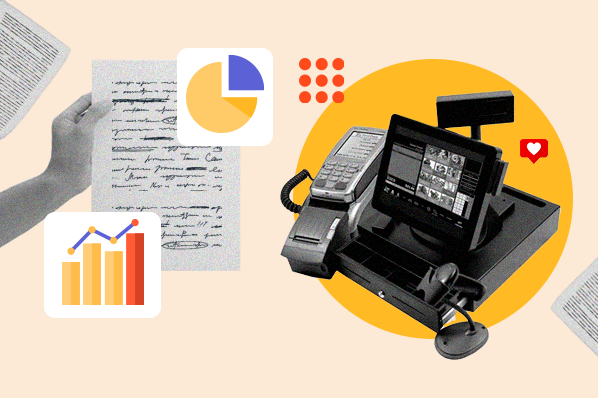Business owners are always looking for ways to grow their customer base. In addition to gaining new customers, they also focus on retaining ones because the probability of selling to an existing customer is 60-70% compared to the 5-20% chance of selling to a new prospect.

But even with modern technology, business owners still struggle to find effective ways to acquire new customers and retain them.
In this post, we'll break down what a customer base is and provide tips on how your company can grow and retain its existing one.
Skip to:
What is a customer base?
Your customer base is the group of people who repeatedly buy your company's products or use your organization's services. These customers frequently engage with your business and provide the most financial value to your company. Depending on the industry, your customer base can be a specific group or a target audience based on a buyer persona.
It's essential to identify your customer base because these people are incredibly valuable to your business. They buy your products the most and rely on your company to help them achieve their goals. Recognizing these customers will help your marketing, sales, and customer service teams build a productive relationship with your customer base.
Within your customer base is a subset of customers referred to as your installed customer base. These customers are at a specific point in the customer journey that differentiates them from the rest of the people in your customer base.
Customer Base vs. Installed Base
The installed base refers to the group of customers within your customer base who are actively using your products. Unlike the customer base, this group excludes people who have not recently made a purchase or are not engaging with your business's offers. Identifying these customers will help your company provide timely service to improve retention.
For example, HubSpot's customer base would be anyone who has purchased or used one of our free or premium tools.
However, HubSpot's installed base would only consist of the customers currently using HubSpot products in their day-to-day workflow. By highlighting this subsection of our customer base, we can personalize our marketing, sales, and customer service offers to fit the specific needs of our active users.
While lead acquisition is essential for building a customer base, it’s not enough to build your installed base. If you want your business to be successful, define the most effective way to balance lead acquisition and customer retention, and both your customer base and installed base will grow.
Now that you can identify your customer base and installed base, you're probably wondering how to build, grow, and retain one. Let’s find out.
How to Build a Customer Base
Here are a few simple ways you can start building your customer base from the ground up.
1. Build brand awareness on social media.
Social media offers you a low-cost or inexpensive way to spread the word about your business and start building your customer base.
You can quickly form connections with your audience on platforms such as Facebook, LinkedIn, and Instagram, and even run giveaways to attract more people.
2. Partner with other businesses.
If you’re a relatively new business with a barely existing customer base, partnering with other businesses is one sure way to build your customer base.
To make the partnership work, you need to offer something valuable in exchange for the wider customer base you’re trying to tap into.
For instance, if you sell portable cameras, you can run a co-marketing campaign with an outdoor or fitness brand to help their customers capture their outdoor adventures, hikes, or workouts.
3. Run email marketing campaigns.
Email remains one of the most effective ways businesses can start building their customer base. Unlike social media, the people on your email list are already interested in your products and services.
So create email marketing campaigns that help you nurture these leads until they become customers.
Let’s now consider how to take your customer base to the next level.
How to Grow Your Customer Base
While marketing and sales teams play a significant role in attracting and engaging your customers, customer service teams grow and retain your customer base by creating a delightful customer experience.
This effort keeps customers coming back for more, creating opportunities for upselling and cross-selling. Below are a few tactics your customer service team can use to grow and retain your customer base.
1. Provide excellent customer service.
This may seem obvious, but many companies fail to deliver exceptional customer service. In fact, a study from Invoca found 76% of consumers will stop conducting business with a brand due to a poor customer service experience.
Customers expect perfection, and even one misstep by your company can result in churn.
Engaging with needy or unhappy customers shouldn't be viewed as a chore, as your team should look at them as an opportunity to grow your customer base. Instead, respond swiftly to customer complaints to increase the chances of these customers purchasing your products again.
Customer service is also a significant influencer of customer retention. Studies reveal that 63% of consumers will pay more for a product or service to get better customer service. So naturally, this puts more pressure on your customer service team to fulfill the customer's request and do so promptly.
2. Encourage customer advocacy.
It can be challenging to attract new customers to your business, especially when they've never heard of your product or service.
In addition, customers are skeptical of advertisements, and most won't be swayed solely by your marketing efforts. Instead, they need to feel confident your company is aligned with and invested in their goals.
One of the best ways to build trust with new leads is to leverage your customer advocates. These customer advocates provide referrals and testimonials that improve your brand's credibility.
BrightLocal research shows that 46% of consumers trust online reviews as much as personal recommendations. So, even if your customer advocates aren't directly referring new leads, encouraging and publicizing their feedback will help make your company appear more trustworthy.
3. Create freemium offers.
Freemium offers are a great way to grab the attention of potential leads. With a freemium offer, companies give away something of value for free in exchange for customer information. The item given away can be as simple as a PDF download or more interactive, like a free prototype software.
For example, HubSpot offers a freemium version of its marketing, sales, and customer service tools. Users don't have to pay to use these tools, but they do have to supply an email address and create a HubSpot account.
This way, customers can get a taste of how useful HubSpot tools can be for their business. Then, HubSpot can analyze the product usage reports for these users and craft personalized customer service and sales offers based on the tools they use most.
4. Implement a referral program.
Existing customers are an excellent resource to leverage when building your customer base. They can act as an effective marketing method by using word of mouth and providing credibility to your brand. In order to incentivize existing customers to refer your brand to family and friends try offering:
- Discounts
- Exclusive access to new products or a free gift
- Upgrade their current plan
Some programs offer both a discount to the existing customer as a thank you and one to the referred customer as a welcome gift. If you decide to go the discount route, make sure that it’s not such a deep discount that referrals start affecting your bottom line.
5. Adopt customer service tools.
As you accumulate more customers, your customer service team must adapt to handle the increase in customer demand. One option your business has is to hire more reps to field service requests.
However, this route is less desirable because it's expensive and time-consuming to complete. Instead, you can use customer service tools to expand the bandwidth of your customer service team without hiring new employees.
One tool you can integrate into your customer service team is a help desk. A help desk is a platform that hosts a variety of helpful customer service tools, like a knowledge base, a ticketing system, and a shared inbox. These tools automatically organize and distribute incoming service requests, making it easier for reps to manage their open cases. Instead of having to keep track of what they're working on, customer service tools optimize your reps' workflow and free up time for them to take more cases each day.
6. Collect customer feedback.
If you're running out of ideas for how to attract new customers, look at your customer feedback.
Positive feedback tells you what you're doing well and what you should boast about to new leads. Negative feedback highlights where you need to improve and what needs to change to increase customer retention.
Keeping close tabs on your customer feedback gives you a better idea of what your customer base values most about your company.
Service feedback should be collected after a support ticket is closed or after a customer service interaction. You can also ask customers for feedback after a purchase is made, as you might be curious about the customer service efforts of your on-the-floor sales team.
There are many effective ways to collect customer feedback. For example, provide customers with surveys after a purchase or service interaction.
NPS® surveys are great because they provide your company with qualitative and quantitative data about your customers. If your team is having trouble collecting responses, check out some of these strategies you can use to obtain customer feedback.
7. Create a customer success program.
Successful businesses understand that a customer's value increases as they buy from your company over time. So if you can convince people to keep coming back to your business, your customer base will continue to grow consistently even if you're only acquiring a handful of customers each month.
One effective customer retention tool is a customer success program. Customer success teams monitor individual accounts for roadblocks within the customer's journey. If they anticipate friction, they can reach out to the customer and help them navigate the issue before it escalates into a significant problem.
This can make all the difference in preventing customer churn, especially when you can remove pain points before customers even know they exist.
8. Consider web accessibility.
If you have a website, it's essential to keep in mind that your brand is visible to anyone who has access to the internet, but not everyone uses the internet in the same way.
Some people need special features enabled on their computers to effectively use and access your site. If your site isn't compatible with these programs, this audience can't reach your content, meaning you're missing out on opportunities to convert potential leads.
Campaign Asia estimates that $6.9 billion a year is lost by brands with inaccessible websites to their accessible counterparts.

If you're new to web accessibility, reviewing the guidelines can help you update your site so you can become accessible to all audiences. Not only is this a smart move for your business, but it's a step you can take to make your business more inclusive.
9. Optimize your customer loyalty program.
Your customer loyalty program is another valuable tool for customer retention and acquisition. It can keep your most loyal customers engaged with your brand's promotional offers, and it can be a competitive advantage when customers compare your company to a competitor in your marketplace.
In fact, 69% of consumers say that loyalty programs influence their decision when considering a new brand.
One way to optimize your customer loyalty program is by adopting a tiered membership structure. Tiers encourage customers to continue buying from your business and create a sense of community as they progress through each level of loyalty.
Each tier should have its special rewards, and the rewards should increase in value as customers move toward the highest tier. This is where your team can estimate customer lifetime value and determine how much a person should spend at your business before they're considered to be one of your most loyal customers.
10. Gamify the customer experience.
Gamification is the process of adding playful elements to everyday tasks or procedures to make the process more enjoyable or engaging.
Businesses are now using gamification to attract new users by including gamified elements that enhance their customer experience. The idea is that customers will not only enjoy using the product, but they will want to keep using it because it's similar to a hobby or game.
In the example below, we can see how HubSpot uses gamification for its Academy training courses. These courses have pop-up quizzes and resources that make the training more interactive and engaging. In addition, once you pass a course, you receive a personalized certificate that you can proudly display on your resume and LinkedIn profile.

11. Personalize customer onboarding.
Once someone completes a purchase with your brand, the next few moments are critical to a customer's journey.
If they struggle with using the product or understanding user training, they may abandon your product altogether and seek a more user-friendly alternative. In fact, according to Wyzowl, 55% of consumers have returned a product because they didn't understand how to use it.
Your customer onboarding program can solve this problem by personalizing each user’s experiences. Rather than applying a one-size-fits-all approach, have your team reach out to your customers and see if you can identify their specific needs and goals.
If you're offering a retail product, prominently display your customer support options on your packaging, so customers know exactly how to reach you if they have a question. Making your customer service team accessible to your customers is the key to providing reliable, real-time support.
Customer Base Examples
Now that you’ve learned how to build and grow a customer base, let’s consider some common examples of customer bases.
1. Loyal Customers
These are customers who have been buying from your business over time. They’ve come to love your products and services and would gladly promote your business to others.
Undoubtedly, it’s crucial to pay special attention to this group of customers. You can keep them satisfied by maintaining or improving the quality of your products and services. You can also start a loyalty program that rewards these customers for their loyalty.
For example, Sephora’s Beauty Insider program allows loyal customers to earn points for every purchase in addition to getting perks like free shipping and birthday gifts.
2. New Customers
New customers are those who recently purchased something from your store.
To turn new customers into recurring or loyal customers, a great start is to ensure they have all they need to succeed with the product or service they just purchased.
If you’re a product-based business, offer new customers manuals or guides that contain detailed information about using the products. And if you run a service-based business, you’ll need to create personalized onboarding experiences for these customers.
3. Potential Customers
Although these are not technically customers yet, it’s still vital to pay attention to them. People in this group are likely still investigating whether your products and services can alleviate their pain points.
You can cater to potential customers by creating freemium offers that give them a taste of your products and services.
4. Bargain/Discount Customers
These are neither new nor loyal customers. Instead, they only come around when you’re having a sale or running a promotion.
It pays not to focus too much on this customer base because they’ll jump ship immediately when another brand offers a bigger discount.
Time to Grow Your Customer Base
Growing and retaining your customer base isn’t a walk in the park. However, with the right channels and methods, you too can build a customer base that will guarantee consistent sales for your business.
Editor's note: This post was originally published in May 2019 and has been updated for comprehensiveness.
![→ Download Now: Customer Service Metrics Calculator [Free Tool]](https://no-cache.hubspot.com/cta/default/53/e24dc302-9dc2-466f-a5ca-ab4e08633c0f.png)









![How to Build a Strong Customer Referral Program in 2024 [Ideas & Examples]](https://www.hubspot.com/hubfs/customer-referral-program_20.webp)
